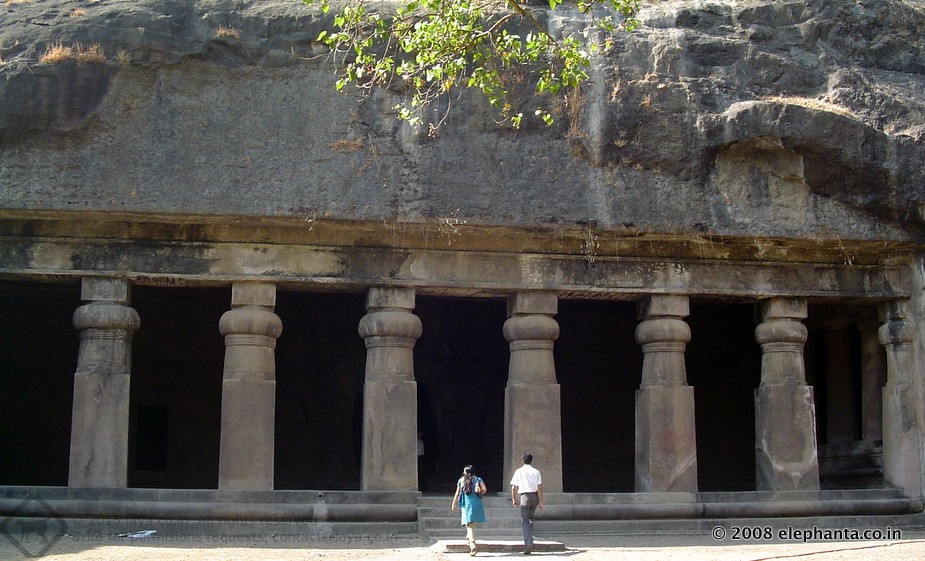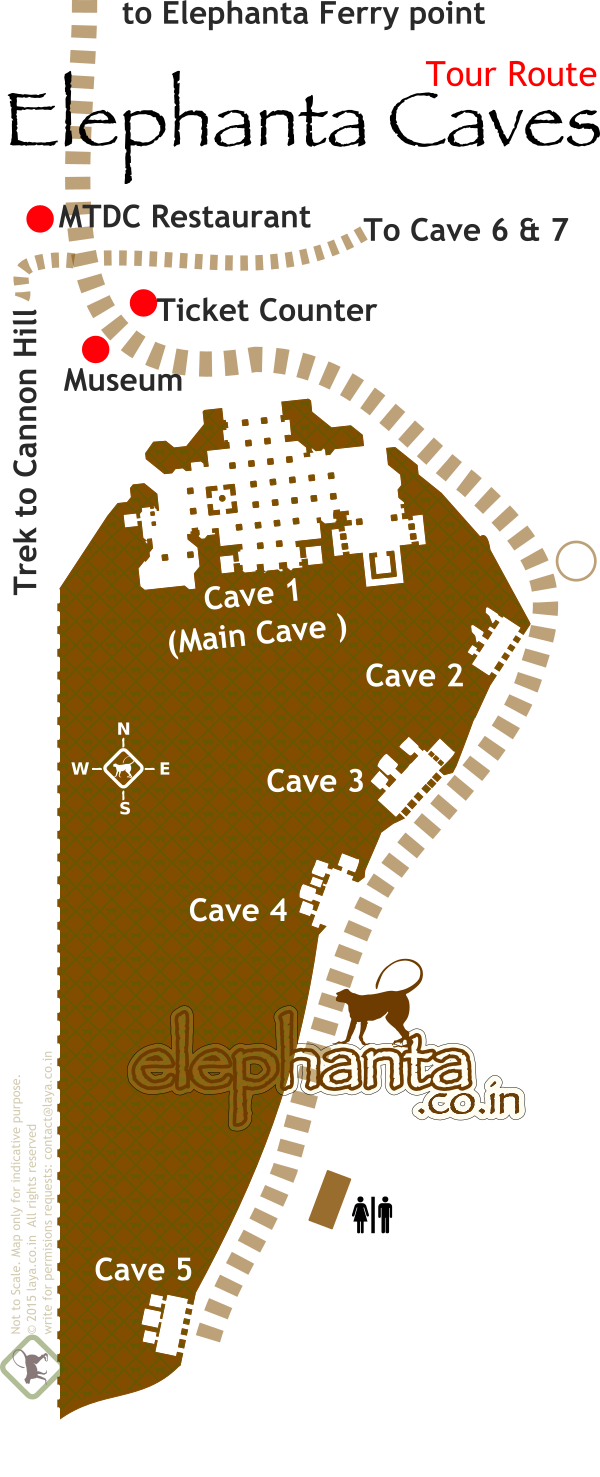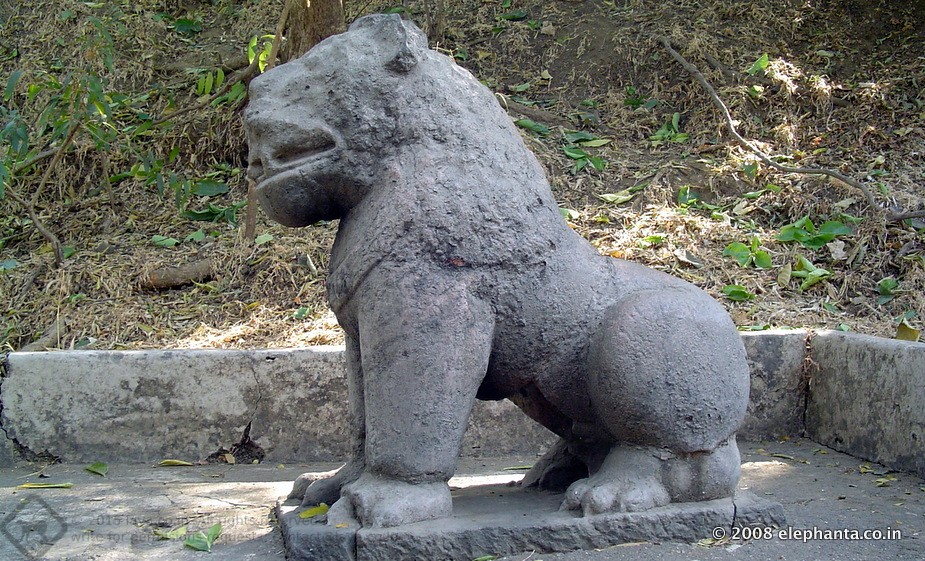Elephanta Caves

Entrance to the cave 3 in Elephanta
Entrance to the cave 3 in Elephanta
T
he name, Elephanta was given by the Portuguese as there was a large elephant sculpture in the island, when it was held by them as a naval outpost. Otherwise this island was known as Gharapuri.Elephanta island stands in stark contrast with hectic Mumbai city. Though it is just 11 kilometers (about 7 miles) from the heart of the city, Elephanta appears as a remote country and that too centuries afar.
Unlike many other ancient monuments in India, very little is known about the history of Elephanta. In other words who and when theses monuments were executed still remains as a matter of speculation and debate.
Much of the beliefs on the patrons of this mysterious island are based on the stylistic ground on which the caves and its sculptures are executed.
The most convincing of the theories tells as that Elephanta caves were executed during the period 450 to 750 AD. The warrior king Pulakesin II of the Chalukyas of Badami dynasty, is attributed with commissioning of a significant portion of the caves.
Elephanta Island came under the dominions of at least half a dozen powers that ruled this region over the centuries.
That include the Mauryas of Konkan, Trikutakas , Chalukyas of Badami, Silaharas, Rashtrakutas , Kalyani Chalukyas , Yadavas of Deogiri, Shahi dynasty of Gujarat , the Portuguese , the Marathas and also the British.
Leaving the history behind for a while, let us see the attractions of Elephanta and a few tips to visit this UNESCO World Heritage Site.
The centerpiece of Elephant is the gigantic cave temple complex (Cave 1) with many shrines and generously decorated walls with carved panels.
In fact a great amount of your time in Elephanta would be spending in this cave, particularly in front of each of these rock-cut panels. They are by any scale the most awe-inspiring rock cut art of India.
The word cave is a bit misleading, when it comes to comprehending this architectural feast. Once you are inside, there is hardly anything that reminds you of a cave. It is unusually tall for a cave and spacious with rows of smartly finished pillars supporting the roof. The central hall of the cave opens to three porches at east, west and north.
There are about 24 sculptural panels on the walls of the Cave 1 (main cave) and the shrines within. The whole thing – the shrines, pillars and panels – are executed by removing rock from a giant rocky hill. In otherwise everything made by painstakingly scooping out rather than ‘installing’ them into the cave.
For the main cave of Elephanta, your tour plan is essentially moving from one panel to the other, visiting the shrines within and generally enjoying settings as a whole.
Though there are no particular orders to be followed, in all probability you would start with the two panes located on either sides of the northern porch as you enter the cave through its main entrance.
From outside this portico appears as a 3 aisled hall with two massive pillars on either side of the steps.
As you enter the cave, on your left is the panel of Mahayogi Shiva and on the right is the Nataraja Shiva.
Let us go straight to the deeper end of the cave which is opposite to portico you've entered. Before you've hit the darker end of the cave, you would cross the central hall of the cave temple with many rows of giant pillars of either side.
Stand in the darker end of the cave for a few minutes before your eyes get accustomed to the dimly lit environs.
There are three panels in a row at this side of the cave. The center piece, the star attraction of Elephanta cave temple iconic image of the three headed Shiva called Mahesh , the great Lord.
From Cave 1 proceed to Cave 2 to till Cave 5 , and Cave 3 and Cave 4 in between them which are connected by a paved trail.

Elephanta Island Map with the caves and other attractions
Elephanta Island Map with the caves and other attractions

Elephanta Caves excursion route
Start from Cave 1 (main cave) and end with cave 5 . Return the same path. The route is well paved and mostly shaded, thanks to the tree cover. You can get a nice panoramic view of the foothills and the sea beyond fro the edges of the trail. The restroom/toilet is located between cave 4 and 5. There are also plenty of places built under the trees to relax along the trail.

Inside Elephanta's Main Cave
Inside Elephanta's Main Cave

Elephanta Ruined lion image
Elephanta Ruined lion image
